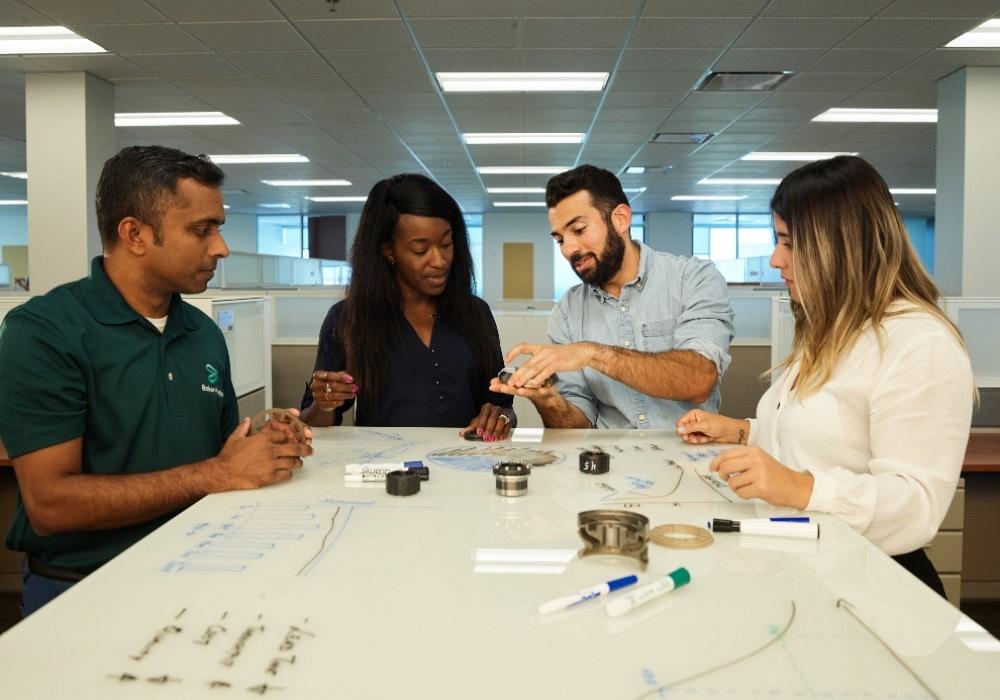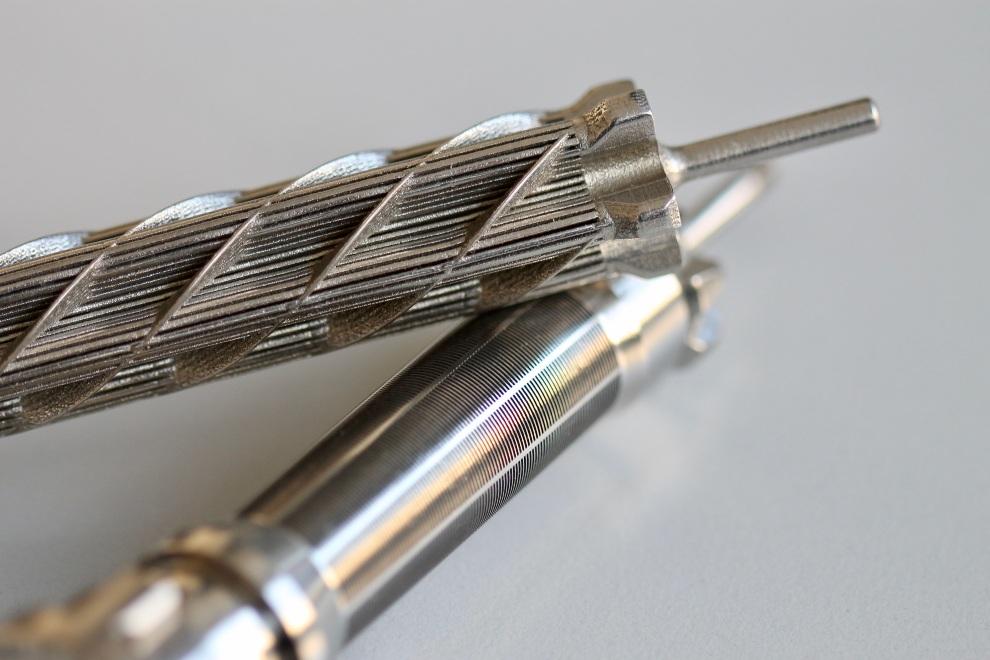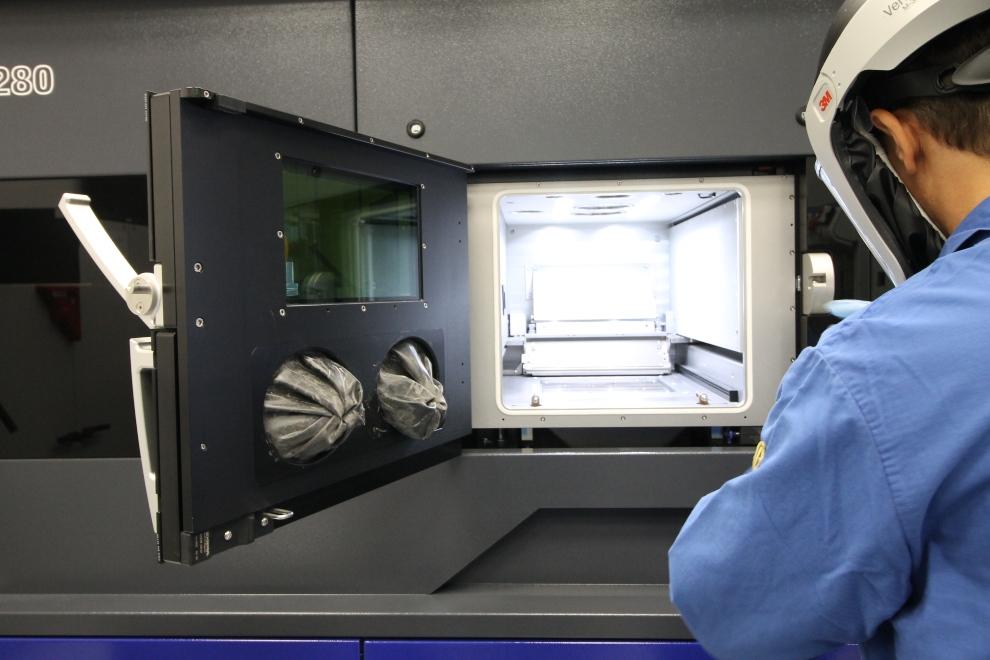- FMA
- The Fabricator
- FABTECH
- Canadian Metalworking
Our Publications
Categories
- Additive Manufacturing
- Aluminum Welding
- Arc Welding
- Assembly and Joining
- Automation and Robotics
- Bending and Forming
- Consumables
- Cutting and Weld Prep
- Electric Vehicles
- En Español
- Finishing
- Hydroforming
- Laser Cutting
- Laser Welding
- Machining
- Manufacturing Software
- Materials Handling
- Metals/Materials
- Oxyfuel Cutting
- Plasma Cutting
- Power Tools
- Punching and Other Holemaking
- Roll Forming
- Safety
- Sawing
- Shearing
- Shop Management
- Testing and Measuring
- Tube and Pipe Fabrication
- Tube and Pipe Production
- Waterjet Cutting
Industry Directory
Webcasts
Podcasts
FAB 40
Advertise
Subscribe
Account Login
Search
New partnership formed to offer customers 3D printing services
Energy company Baker Hughes and industrial distributor Würth Industry aim to use their new 3D printing service to simplify customers’ supply chains
- By William Leventon
- February 15, 2021
- Article
- Additive Manufacturing

The Baker Hughes-Würth Industry North America collaboration will enhance Würth’s ability to take its 3D printing customers’ ideas from prototype to small-batch production to mass production at accelerated rates.
Energy technology firm Baker Hughes Co. and supply-chain solutions provider Würth Industry North America (WINA) recently announced a 3D printing partnership that they hope will benefit both themselves and customers from a range of industries.
Würth’s global sales team now offers Baker Hughes’ additive manufacturing and inventory management services, while Baker Hughes has access to Würth’s 80,000-strong customer base, allowing the energy firm to expand the reach of its 3D printing services beyond its traditional boundaries. Sectors targeted by the partnership include oil and gas, aerospace, automotive, maritime, and renewable power generation.
Headquartered in Greenwood, Ind., WINA is the North American subsidiary of Germany-based fastener distributor Würth Group.
WINA’s 3D additive group “is a collection of consultants that can walk into a customer’s building and help identify solutions,” said AJ Strandquist, director of 3D solutions.
Strandquist describes WINA as mainly an integrator of AM technologies supplied by others. WINA’s partners include Polymaker LLC, which produces 3D printing materials, and Markforged Inc., a maker of industrial 3D printers.
At its seven AM centers, Baker Hughes’ typically produces downhole and turbomachinery components for heavy industry. The company employs various 3D printing machines and processes, including direct energy deposition (DED) for printing drill bits and direct metal laser melting to produce drilling services parts.
“The true impact [of 3D printing] happens when you start designing parts that are not possible to make any other way,” said Mikhail Gladkikh, the firm’s global leader for additive services.
As an example, Gladkikh cited a backup ring used in a rubber product called a packer, which inflates to isolate a portion of a well bore. The backup ring, which holds the packer in place, “has a unique structure that can only be manufactured additively,” he said.
Selecting Suitable Parts
Baker Hughes can select parts suitable for AM using a combination of machine learning algorithms, past maintenance records, and production forecasts.
“We think that today about 10% to 15% of customer inventory can be converted to additive,” Gladkikh said.

Würth Industry and Baker Hughes furnish additively manufactured parts to customers throughout the general manufacturing, oil and gas, aerospace, marine, heavy equipment, and transportation markets. Würth Industry
To determine whether an individual part is a candidate for AM, two questions should be answered in the affirmative, according to Gladkikh. The first is, can the part be printed? This is where machine learning comes in. During its decades of experience with AM, Baker Hughes has successfully printed more than 500 part designs and over 50,000 parts in all. Using data from this large library of parts, Baker Hughes can create a neural network that analyzes a part in a customer’s inventory to determine with high probability whether or not it’s suitable for AM, Gladkikh explained.
If the answer is yes, he said, it’s time to ask the second question: Is there an economic or other compelling reason to switch from conventional to additive manufacturing?
To illustrate how this question can be answered, Strandquist points to a case involving a customer’s sprayer nozzle. The nozzle deteriorated quickly, and the customer eventually found that the only way to lower maintenance costs was to 3D-print the part. He said the conventionally manufactured plastic nozzle was much cheaper to produce, “but who cares about that if it’s breaking all the time?”
Digitalizing Inventory
The inventory management system offered by Baker Hughes digitalizes parts for production on demand. According to Gladkikh, digitalization is more than just creating a digital part file that can be sent to a printer or printing service. “It’s a combination of files that contain information you need, not just to replicate the design but to print the part in the right machine and use the right process and quality control [procedure] to make sure it will work the way it is supposed to.”
Strandquist stressed that digitalization does not mean the complete elimination of physical inventory. Companies should have a physical version of a part in inventory so the part can be replaced right away if it breaks. But then, in a digital inventory system, the empty space where the replacement part was stored is scanned to trigger a re-order from a local printer or a print service.
The idea, Strandquist explained, “is to have the physical product on hand. But instead of having 10 of them or having to worry about the lead time for the next one, you can print it on demand.”
Currently, the partners’ services are being used by several organizations. One of them is NASA, which needed a complex prototype part for wind-tunnel testing. Fabrication of the part is almost finished, Gladkikh reported.
To produce the part, the manufacturing team is using a hybrid DED system comprising a 5-axis milling machine equipped with a nozzle that deposits material—stainless steel in this case.
“The hybrid machine creates complex shapes with additive and then achieves tolerances and surface finish that only machining can provide,” Gladkikh said, adding that he and his colleagues spent several years learning and perfecting the technology.
AM for Everyone
Looking ahead, Strandquist sees opportunities to supplement the traditional supply chain with additively manufactured parts in a variety of situations, including occurrences in extremely challenging environments. Consider, for example, the failure of a critical part in a mine that is difficult to access.

Baker Hughes switched from machining the screen for this downhole fluid-analysis tool to 3D-printing it. The result is a larger filtering surface and a much lower cost to produce the filter.
“If you have an internet connection and a printer robust enough to live in a mine, which we carry, you could have the world’s best engineers work on that part and then you can print it where you are,” he said.
AM also could come to the rescue when a multicomponent part breaks on an offshore platform. Instead of having all the individual components of the part flown to the rig, the problem could be solved in the future by shipping only boxes of raw material to a rig equipped with a 3D printer and then printing the replacement part onsite.
Just like information in today’s world, Gladkikh said, “we want to make physical parts and assets available to anyone, anywhere, anytime.”
About the Author

William Leventon
(609) 926-6447
About the Publication
- Podcasting
- Podcast:
- The Fabricator Podcast
- Published:
- 04/16/2024
- Running Time:
- 63:29
In this episode of The Fabricator Podcast, Caleb Chamberlain, co-founder and CEO of OSH Cut, discusses his company’s...
- Trending Articles
- Industry Events
16th Annual Safety Conference
- April 30 - May 1, 2024
- Elgin,
Pipe and Tube Conference
- May 21 - 22, 2024
- Omaha, NE
World-Class Roll Forming Workshop
- June 5 - 6, 2024
- Louisville, KY
Advanced Laser Application Workshop
- June 25 - 27, 2024
- Novi, MI



























